Extrusion Material Moisture on the Property of Prolamins from Distiller's Grains
-
摘要: 本文通过单螺杆挤压机改性白酒糟(Distiller's grains,DGs),研究了挤压物料水分(21%、24%、27%、30%、33%)对白酒糟醇溶蛋白(Prolamins from distiller's grains,PDGs)理化(溶解度、表面疏水性、巯基和二硫键含量)、功能(持水、持油能力)和二、三级结构等性质的影响。结果表明,不同挤压物料水分对PDGs改性效果具有显著影响,随物料水分增加,挤压对PDGs天然结构的破坏程度逐渐增大,分子构象的改变促进内部亲水基团的暴露和二硫键的生成,物料水分为27%时,溶解度提高了1.56倍,达到34.75%,表面疏水性降低了56.11%,增强了持水能力,热变性温度由96.79 ℃增大到102.53 ℃,热稳定性更强,PDGs经变性重排后,蛋白聚集体有序程度增加。而物料水分过高时(高于27%),挤压造成PDGs过度变性,稳定聚集态的破坏反而会弱化其亲水、热特性、有序程度等,说明挤压物料水分对PDGs性质的改变具有十分重要的调控作用。Abstract: In this study, a single-screw extruder was used to extrude distiller's grains (DGs) and the effect of extrusion material moisture (21%, 24%, 27%, 30%, 33%) on prolamins from DGs (PDGs) was studied by measuring the physicochemical (solubility, hydrophobicity, sulfhydryl and the disulfide bonds contents), functional (water and oil holding capacities) and secondary and tertiary structure properties. The results showed that the modification effect of PDGs was significantly affected by different extrusion material moisture. The damage degree of the natural structure of PDGs was increased gradually with the increase of extrusion material moisture, and the change of molecular conformation promoted the exposure of internal hydrophilic groups and the formation of disulphide bonds. The solubility was increased by 1.56 times to 34.75%, the surface hydrophobicity was reduced by 56.11% at 27% extrusion materials moisture, and the water holding capacity was enhanced accordingly. The thermal denaturation temperature was increased from 96.79 ℃ to 102.53 ℃, indicating the thermal stability was stronger. The order of protein aggregates increased after the denaturation rearrangement of extruded PDGs. Extrusion led to excessive degeneration of PDGs when the material moisture was too high (higher than 27%), and the destruction of the stable aggregation state would weaken the hydrophilicity, thermal property and order degree of PDGs, indicating that the extrusion material moisture played a very important role in regulating the variation of PDGs properties.
-
白酒糟(Distiller's grains,DGs)是粮谷类作物经过发酵、蒸馏产生的固体废弃物[1],是酿酒行业最大的副产物,往往被直接丢弃或作为廉价的动物饲料和沼气产能等利用,极易造成环境污染和资源浪费。研究发现,DGs中含有大量未被利用的醇溶蛋白,占总蛋白含量的45%[1−2],是良好的谷物醇溶蛋白资源。因此,增强对白酒糟醇溶蛋白的开发是促进DGs高值化再利用的有效途径,同时还可提升白酒行业的经济效益。
白酒糟醇溶蛋白(Prolamins from distiller's grains,PDGs)具有较强的交联性、自组装性能,在工业上应用潜力大。研究表明,利用PDGs制备的可生物降解薄膜阻水性能良好[3],复合成膜液对杨梅[4]、巨峰葡萄[5]具有保鲜作用,可有效延长货架期。此外,PDGs还被用于生产无麸质产品、乳化稳定剂和纳米颗粒[4]等。但PDGs疏水性氨基酸含量高、溶解性差、营养价值和消化性能较差等[6]性质限制其进一步开发,因此需利用外在条件加以改性。
蛋白质改性技术主要分为物理、化学及酶法改性,张明珠等[7]利用α-淀粉酶对玉米醇溶蛋白进行改性,可有效提升其持水和持油能力,但对溶解性影响不大,且酶法改性成本高,不利于工业化生产。李娇等[8]应用磷酸化改性PDGs,有效提高了PDGs的水溶性和持水性,但化学改性时需引入新物质,安全性存在隐患[7-8]。而以挤压为代表的物理改性技术具备安全高效、成本低,不引入新物质等优势,在改性谷物蛋白方面应用广泛。研究证明挤压可改善高粱醇溶蛋白的水溶性,从而提高其消化率[9],在一定条件下有助于增强玉米醇溶蛋白的交联和聚集[10]。另外,挤压还被应用于改性豌豆[11]、芝麻[12]、绿豆[13]等谷物蛋白,有效改善了其理化及功能性质。因此,本文对DGs进行挤压处理,通过醇碱法提取PDGs,研究挤压物料水分对PDGs的溶解性、表面疏水性、热特性及持水和持油能力的影响,进行二、三级结构的表征,探究物料水分在挤压中对PDGs的改性机理,为PDGs的开发应用提供理论依据,从而促进DGs的高值化再利用。
1. 材料与方法
1.1 材料与仪器
白酒糟(DGs,水分含量12%,粗蛋白21%,粗脂肪10%,粗纤维30%) 山东淄博扳倒井有限股份公司,由高粱、水稻、小麦和玉米按8:9:3:1蒸馏发酵而成;无水乙醇 天津市致远化学试剂有限公司;浓香大豆油 山东鲁花集团有限公司;BC1375-100/48s总巯基含量测定试剂盒 北京索莱宝科技有限公司;其余试剂均为分析级。
YJP200单螺杆挤压机(螺杆内/外径:77/79 mm,长径比:16.4:1,模孔直径:10 mm) 山东理工大学农产品精深加工实验室[14];Multiskan酶标仪 上海赛默飞世尔科技有限公司;Nicolet5700傅里叶变换红外光谱 美国热电有限公司;RF-600荧光分光光度计 日本岛津有限公司。
1.2 实验方法
1.2.1 白酒糟挤压处理
提前将白酒糟利用自动喷雾混料机将其水分含量分别调节至:21%、24%、27%、30%、33%,平衡后待用,设置挤压参数为:温度100 ℃,螺杆转速140 r/min。挤出物在25 ℃下干燥,使其水分含量稳定在12%±0.5%。将干燥挤出物和未挤压DGs分别粉碎并过40目筛,密封干燥保存。
1.2.2 白酒糟醇溶蛋白提取
参考Wang等[15]的方法从DGs中以醇碱法提取PDGs。DGs按料液比1:10与含有0.35%NaOH和0.5%Na2S2O5的70%乙醇溶液混合,在70 ℃下搅拌反应1 h,之后进行离心,将沉淀物(PDGs)用蒸馏水洗涤3次后冻干并干燥保存。挤压DGs中提取的PDGs,根据物料水分标记为M-21、M-24、M-27、M-30、M-33,未挤压DGs中提取的PDGs为对照组,标记为 CK。
1.2.3 白酒糟醇溶蛋白(PDGs)理化性质的测定
1.2.3.1 溶解性的测定
参考Hossain等[13]的方法测定PDGs的溶解性。将PDGs分散到0.01 mol/L磷酸盐缓冲溶液(20 mL,pH7.0)中制备浓度为10 mg/mL的蛋白悬浮液。取1 mL PDGs混悬液和4 mL双缩脲试剂混匀,反应30 min后测定540 nm处吸光度值,并通过BSA标准曲线计算蛋白溶解度。
1.2.3.2 表面疏水性的测定
采用ANS荧光探针法[2]测定PDGs的表面疏水性。利用0.01 mol/L pH7.0的磷酸盐缓冲液制备五个浓度梯度(0.0625、0.0125、0.2500、0.5000、1.0000 mg/mL)的样品溶液,混匀后加入20 μL 8 mmol/L的ANS溶液,避光反应15 min后在激发波长390 nm、发射波长470 nm条件下进行比色,荧光强度(FI)对蛋白浓度的线性回归斜率为PDGs的表面疏水性。
1.2.3.3 巯基和二硫键含量的测定
PDGs的游离巯基含量(CSH)测定参考Wang等[16]的方法。将30 mg PDGs与10 mL Tris-Gly缓冲液(pH8.0)、50 μL Ellman试剂(4 mg/mL)混合反应3 min后并离心。用酶标仪测量上清液在412 nm的吸光度。游离巯基含量按照式(1)计算:
(1) 式中,A412代表412 nm处的吸光度,D代表稀释因子,C代表蛋白质的分散浓度(mg/mL),CSH代表蛋白中游离巯基含量。
总巯基含量(CT-SH)参考Yang等[17]的方法由总巯基含量测定试剂盒测定。
(2) 式中,CSS、CT-SH、CSH分别代表蛋白的二硫键含量、总巯基含量和游离巯基含量(μmol/g)。
1.2.4 持水/持油能力的测定
参考Peng等[11]的方法并加以修改。准确称取0.50 g PDGs(m0)加入至空离心管中进行称重,记录为m1。往离心管中分别加入5 mL去离子水和大豆油,室温下以300 r/min速度搅拌30 min以保证分散均匀,静置20 min后以8000 r/min离心30 min,将上清液/油层完全吸出后称重,分别记录为m2和m3。持水/持油能力分别按式(3)和式(4)进行测定:
(3) (4) 式中,m0:PDGs的质量,g;m1:PDGs加空离心管的质量,g;m2/3:弃去上清水液/油层后离心管加蛋白沉淀的质量,g。
1.2.5 热特性(DSC)的测定
参考Hossain等[13]的方法测定PDGs的热特性。将5 mg PDGs加入铝盘并密封,在N2中以10 ℃/min的加热速率从20 ℃扫描至 200 ℃。
1.2.6 白酒糟醇溶蛋白结构性质的表征
1.2.6.1 傅里叶变换红外光谱分析(FTIR)
将2 mg PDGs与 200 mg KBr混合后进行扫描,扫描范围为4000~500 cm−1,扫描次数 64次[2]。用Peakfit 4.12软件分析蛋白质二级结构。
1.2.6.2 X 射线衍射分析(XRD)
利用X射线衍射仪(Cu-K,40 kV,40 mA)对PDGs进行扫描,扫描范围为2θ=5º~45º,扫描速度为0.02º/min[18]。
1.2.6.3 紫外光谱(UV)
根据Zhu等[2]的方法,将PDGs溶于磷酸盐缓冲液(0.01 mol/L,pH7.0)中制备浓度为 1 mg/mL 的蛋白溶液,扫描范围200~400 nm。
1.2.6.4 荧光光谱(FI)
根据Hu等[18]的方法测定PDGs的内源荧光光谱。将PDGs溶于70%乙醇中制备1 mg/mL的溶液进行扫描,激发波长为280 nm,发射光谱300~500 nm,扫描狭缝5 nm,扫描速度240 nm/min。
1.3 数据处理
所有试验重复3次,使用IBM SPSS Statistics 26软件对所有数据进行单因素ANOVA检验分析(P<0.05),使用Origin 2021软件进行图片处理。
2. 结果与分析
2.1 挤压物料水分对PDGs理化性质的影响
2.1.1 溶解性
由图1可知,与CK(溶解度22.26%)相比,随物料水分的增加,挤压PDGs的溶解性总体呈现先增高后降低的趋势。物料水分介于21%~27%时,溶解性显著增加(P<0.05),M-27溶解性最大,为34.75%。挤压破坏了PDGs的天然结构,暴露出内部的亲水性基团,增加了溶解度[19]。而当物料水分超过27%时,溶解度下降并低于CK,因为物料水分高会提供更多的水分子,结合机筒内释放的热量,增加了蛋白质链的流动性,引起PDGs的大分子量聚集,从而降低了溶解度[13]。在高物料水分条件下挤压处理的芝麻蛋白[12]、大豆蛋白[20]和绿豆蛋白[13]的溶解度都显著降低。结果表明物料水分会与挤压释放的热量相结合,影响PDGs的变性程度,从而改变其溶解度。当物料水分低于27%时,挤压可有效提高PDGs的溶解度。
2.1.2 表面疏水性
ANS与蛋白质表面疏水基团的结合程度反映出不同的疏水强度[21]。CK的表面疏水性显著高于挤压后样品(P<0.05,图2)。可能是PDGs经挤压发生的交联和聚集,覆盖了表面的疏水位点,抑制ANS的结合[13]。大米酒糟蛋白[22]和绿豆蛋白[13]经挤压后表面疏水性也显著降低。M-27倾向于形成小尺寸蛋白聚集体,与水分子表面相互作用的增加使其具有最高的溶解度(图1)和最低的表面疏水性。由此可知,物料水分通过影响挤压后PDGs的聚集程度,覆盖表面疏水基团有效降低其表面疏水性,拓宽了其在亲水食品体系的应用。
2.1.3 巯基和二硫键含量
物料水分为21%~27%时,游离巯基含量随物料水分的增加而降低,二硫键含量逐渐增大(图3)。因为高物料水分会促进挤压后蛋白的聚集,覆盖原本暴露的-SH并伴随生成新的链间-S-S-。当物料水分超过27%时,过度变性会使链间-S-S-发生断裂,并促进了内部-SH的暴露[22],造成M-30中游离巯基含量的增加和二硫键的下降。继续增加物料水分,在M-33中同时观察到-S-S-的增加和-SH的减少,原因可能是发生了SH-SS交换反应[23],即在一定条件下,一部分-SH 被氧化生成含硫化合物,另一部分则通过SH-SS交换反应生成二硫键。上述结果表明,不同挤压物料水分条件显著改变了PDGs表面亲/疏水分子结构的暴露数量和分布,从而影响其分子间作用力。
2.2 持水和持油能力
持水能力的大小取决于蛋白表面与水相互作用的极性位点数量,受蛋白质构象影响[11]。随挤压物料水分增加,持水能力大体呈先升高后降低的趋势,在物料水分为 27% 和30% 时得到提升(图4)。挤压后PDGs天然结构被破坏,聚集体的解聚和重排暴露了内部的亲水性基团,可携带更多的水分子,从而提高了持水能力[12]。继续增加物料水分,均一、致密聚集体的破坏降低了对水分子的吸收能力,造成M-33持水能力的下降。持油能力取决于蛋白质分子表面疏水基团和油脂相互作用程度[8,11]。在挤压高剪切力作用下,PDGs分子链被打开后重聚,随变性程度的增加,松散的分子结构生成致密聚集体,掩盖了表面的疏水基团,降低了结合油脂的能力[22]。由此可知,通过控制挤压物料水分可有效提高PDGs的持水能力和持油能力。
2.3 热特性(DSC)
热变性温度代表蛋白发生变性所需的最低温度[24]。CK的热变性温度为96.79 ℃,挤压后,M-27的热变性温度最高,为102.53 ℃(图5)。可能是因为在该物料水分下,挤压促进PDGs的展开与重聚,形成致密、稳定的蛋白聚集态[20,22]。物料水分低于27%时,挤压对PDGs热特性影响不大,但高于27%时,PDGs表现出较差的热特性,是因为挤压时物料水分充当增塑剂与分子表面的极性基团相互作用,减弱PDGs分子与氢键结合程度,造成刚性降低[25]。挤压物料水分通过影响PDGs聚集体的形成和分子相互作用而改善其热特性,在27% 时表现出最佳耐热性。
2.4 二级结构
如图6a,挤压前后PDGs红外光谱中具有酰胺Ⅰ带的特征吸收峰(1700~1600 cm−1),该吸收峰主要包括C=O键的拉伸振动[2]。由图6b可知,M-21、M-24中α-螺旋减少,同时伴随着β-折叠的增加,原因可能是挤压剪切作用破坏蛋白质的天然结构,造成氢键断裂,相互作用减弱,增大了PDGs的刚性,降低蛋白水解的效率,从而影响其利用[13]。M-27中回升的α-螺旋和下降的β-折叠含量说明在该物料水分条件下,经挤压的PDGs蛋白结构在解聚和重排后有序程度较高[13],与热特性分析中致密、稳定的蛋白聚集体一致(图5)。而当物料水分超过27%时,经挤压的PDGs表现出β-转角的降低和无规则卷曲的增加,表明发生过度变性,蛋白结构从有序向无序状态偏移[19]。因此,在物料水分为27%时,挤压改性的PDGs有序程度较高。
2.5 XRD光谱
挤压前后 PDGs均在2θ=19°左右具有最大衍射峰,挤压后最大衍射峰的强度发生了不同程度的变化(如图7所示)。CK在2θ=19.04°的衍射强度为30,挤压后,最大峰衍射强度分布在22~34。物料水分为27%时,衍射强度最大为34。原因可能是在物料水分为27%时通过挤压形成的蛋白分子聚集态排列规则,有序程度高[22]。而M-30、M-33的峰强分别为22、24,表明该物料水分条件下PDGs发生过度变性,有序结构被破坏,与二级结构含量的变化相符(图6b),导致整体稳定性的下降。
2.6 紫外光谱
紫外光谱通常用于研究物理力引起的蛋白质构象变化[26]。图8为挤压前后PDGs的紫外吸收光谱,均在280 nm左右呈现出典型的蛋白质特征峰,该吸收峰是由Trp和Try残基上的π-π转变引起的[26]。挤压后PDGs最大吸收峰位置没有显著变化,但强度明显降低,可能更紧密的聚集体状态覆盖了表面的吸收基团[27],导致峰强度的下降。M-27经挤压变性重排后获得蛋白聚集体均匀致密且稳定,表现出较低的峰强度。
2.7 荧光光谱
荧光光谱常用于表征蛋白质结构和Trp、Tyr残基周围环境的变化[28]。图9表示与CK相比,挤压后PDGs的最大吸收峰位置和强度都发生了变化,强度明显低于CK(5042),因为挤压导致PDGs的变性和聚集,覆盖了原本暴露在表面的Trp基团,从而使荧光吸收强度下降[29]。并且还观察到最大吸收峰位置的改变,CK为341 nm,挤压后PDGs的最大吸收峰位置分布在342~360 nm,其中在M-21和M-24样品观察到明显的红移,表示在该水分条件下进行挤压,PDGs结构变得更加松散,有助于提高其亲水性。
3. 结论
利用单螺杆挤压机对不同物料水分含量的PDGs进行挤压处理,有效改善了PDGs的理化、功能及结构性质。与未挤压PDGs相比,在物料水分为27%时,经挤压改性的PDGs聚合度最高,最稳定,其中溶解度提高了1.56倍,表面疏水性降低了56.11%,持水能力也得到提升,热变性温度由96.79 ℃ 增大到102.53 ℃,二、三级结构的变化也证亲水性和有序程度的增强。物料水分过低时,会造成挤压过程中PDGs变性程度不充分,蛋白结构较松散,而物料水分过高时,挤压造成的过度变性会破坏稳定的蛋白聚集体,从而弱化其性能。结果表明,挤压可作为改性PDGs的有效技术方法,为PDGs更深层次的开发利用奠定了理论基础,也为DGs的再开发提供新的思路。
-
-
[1] 侯梦媛, 范文来, 徐岩. 白酒酒糟中醇溶蛋白的提取及性质比较[J]. 食品与发酵工业,2020,46(19):99−103. [HOU M Y, FAN W L, XU Y. Extraction and characterization comparison of prolamin from wet and dried distiller's grains of Baijiu[J]. Food and Fermentation Industries,2020,46(19):99−103.] HOU M Y, FAN W L, XU Y. Extraction and characterization comparison of prolamin from wet and dried distiller's grains of Baijiu[J]. Food and Fermentation Industries, 2020, 46(19): 99−103.
[2] ZHU L, LI X, SONG X, et al. Characterization of prolamin recycled from the byproduct of the Baijiu brewing industry (Jiuzao) by SDS-PAGE, multispectral analysis, and morphological analysis[J]. Food Bioscience,2022,49:101854. doi: 10.1016/j.fbio.2022.101854
[3] LI C, HU Q, LIANG Y, et al. Physicochemical properties and application in film preparation of prolamin from distiller's grains[J]. International Journal of Food Science & Technology,2022,57(8):5206−5215.
[4] 侯梦媛. 白酒酒糟中醇溶蛋白的研究与应用[D]. 无锡:江南大学, 2020. [HOU M Y. Study and application of prolamin from distiller's grains of Baijiu[D]. Wuxi:Jiangnan University, 2020.] HOU M Y. Study and application of prolamin from distiller's grains of Baijiu[D]. Wuxi: Jiangnan University, 2020.
[5] 祖未希, 梁雅琪, 李晨. 白酒糟醇溶蛋白复合涂膜液对巨峰葡萄的保鲜效果[J]. 食品研究与开发,2022,43(23):70−76. [ZU W X, LIANG Y Q, LI C. Preservation effect of composite emulsion coating containing prolamin from Baijiu distiller's grains on Kyoho grape[J]. Food Research and Development,2022,43(23):70−76.] ZU W X, LIANG Y Q, LI C. Preservation effect of composite emulsion coating containing prolamin from Baijiu distiller's grains on Kyoho grape[J]. Food Research and Development, 2022, 43(23): 70−76.
[6] 胡倩楠. 酒糟营养品质评价及酒糟醇溶蛋白的理化特性研究[D]. 太原:山西大学, 2021. [HU Q N. Evaluation of nutritional quality of distiller's grains and study on the physicochemical properties of the prolamin[D]. Taiyuan:Shanxi University, 2021.] HU Q N. Evaluation of nutritional quality of distiller's grains and study on the physicochemical properties of the prolamin[D]. Taiyuan: Shanxi University, 2021.
[7] 张明珠, 张丽芬, 陈复生, 等. 玉米醇溶蛋白的超声辅助酶法提取工艺及不同提取方法对其结构和功能特性的影响[J]. 中国油脂,2021,46(4):26−32. [ZHANG M Z, ZHANG L F, CHEN F S, et al. Ultrasound-assisted enzymatic extraction of zein and effects of different extraction methods on its structure and functional properties[J]. China Oils and Fats,2021,46(4):26−32.] ZHANG M Z, ZHANG L F, CHEN F S, et al. Ultrasound-assisted enzymatic extraction of zein and effects of different extraction methods on its structure and functional properties[J]. China Oils and Fats, 2021, 46(4): 26−32.
[8] 李娇, 梁雅琪, 王景雪, 等. 白酒糟醇溶蛋白的磷酸化改性及功能性质[J]. 食品工业科技,2023,44(9):60−67. [LI J, LIANG Y Q, WANG J X, et al. Phosphorylated modification and functional properties of prolamin from Baijiu distiller's grains[J]. Science and Technology of Food Industry,2023,44(9):60−67.] LI J, LIANG Y Q, WANG J X, et al. Phosphorylated modification and functional properties of prolamin from Baijiu distiller's grains[J]. Science and Technology of Food Industry, 2023, 44(9): 60−67.
[9] D'ALMEIDA C T D S, MAMERI H, MENEZES N D S, et al. Effect of extrusion and turmeric addition on phenolic compounds and kafirin properties in tannin and tannin-free sorghum[J]. Food Research International,2021,149:110663. doi: 10.1016/j.foodres.2021.110663
[10] ZHANG Y, XU M, ZHANG X, et al. Impacts of extrusion temperature and α-subunit content on structure of zein extrudate and viscoelasticity of the plasticized network[J]. Food Research International,2022,162:112129. doi: 10.1016/j.foodres.2022.112129
[11] PENG H, ZHANG J, WANG S, et al. High moisture extrusion of pea protein:Effect of l-cysteine on product properties and the process forming a fibrous structure[J]. Food Hydrocolloids,2022,129:107633. doi: 10.1016/j.foodhyd.2022.107633
[12] 黄纪念, 孙强, 张富重, 等. 挤压组织化对芝麻蛋白理化性质及结构的影响[J]. 食品工业科技,2023,44(2):60−68. [HUANG J N, SUN Q, ZHANG F Z, et al. Influence of extrusion texturization on the physical and chemical properties and structure of sesame protein[J]. Science and Technology of Food Industry,2023,44(2):60−68.] HUANG J N, SUN Q, ZHANG F Z, et al. Influence of extrusion texturization on the physical and chemical properties and structure of sesame protein[J]. Science and Technology of Food Industry, 2023, 44(2): 60−68.
[13] HOSSAIN B F, CHAY S Y, MUHAMMAD K, et al. Structural and rheological changes of texturized mung bean protein induced by feed moisture during extrusion[J]. Food Chemistry,2021,344:128643. doi: 10.1016/j.foodchem.2020.128643
[14] JIANG L, QI M, DENG Y, et al. Extrusion-induced pre-gelatinization and hydrolyzation of rice adjunct contributed to the mashing performance[J]. LWT,2022,158:113126. doi: 10.1016/j.lwt.2022.113126
[15] WANG Y, TILLEY M, BEAN S, et al. Comparison of methods for extracting kafirin proteins from sorghum distillers dried grains with solubles[J]. Journal of Agriculture and Food Chemistry,2009,57:8366−8372. doi: 10.1021/jf901713w
[16] WANG Y, LI B, GUO Y, et al. Effects of ultrasound on the structural and emulsifying properties and interfacial properties of oxidized soybean protein aggregates[J]. Ultrasonics Sonochemistry,2022,87:106046. doi: 10.1016/j.ultsonch.2022.106046
[17] YANG X, XU J, FU C, et al. The cataract-related S39C variant increases γS-crystallin sensitivity to environmental stress by destroying the intermolecular disulfide cross-links[J]. Biochemical and Biophysical Research Communications,2020,526(2):459−465. doi: 10.1016/j.bbrc.2020.03.072
[18] HU S, ZHU S, LUO J, et al. Effect of extrusion on physicochemical properties and antioxidant potential of protein isolate derived from Baijiu vinasse[J]. Food Chemistry,2022,384:132527. doi: 10.1016/j.foodchem.2022.132527
[19] 李琦, 葛思彤, 张士禹, 等. 玉米后熟期间醇溶蛋白结构和理化特性[J]. 食品科学,2022,43(18):16−23. [LI Q, GE S T, ZHANG S Y, et al. Structure and physicochemical properties of zein during postharvest ripening of corn[J]. Food Science,2022,43(18):16−23.] LI Q, GE S T, ZHANG S Y, et al. Structure and physicochemical properties of zein during postharvest ripening of corn[J]. Food Science, 2022, 43(18): 16−23.
[20] 张浩嘉, 朱秀清, 孙莹. 挤出参数控制对大豆蛋白微观构象的影响[J]. 食品科学,2023,44(15):103−112. [ZHANG H J, ZHU X Q, SUN Y. Effect of extrusion parameters on soybean protein conformation[J]. Food Science,2023,44(15):103−112.] ZHANG H J, ZHU X Q, SUN Y. Effect of extrusion parameters on soybean protein conformation[J]. Food Science, 2023, 44(15): 103−112.
[21] AKHARUME F, SANTRA D, ADEDEJI A. Physicochemical and functional properties of proso millet storage protein fractions[J]. Food Hydrocolloids,2020,108:105497. doi: 10.1016/j.foodhyd.2019.105497
[22] WANG C, LIU Y, XU L, et al. Changes of the main components, physicochemical properties of distiller’s grains after extrusion processing with focus on modification mechanism[J]. Food Chemistry,2022,390:133187. doi: 10.1016/j.foodchem.2022.133187
[23] CHEN Y, LIANG Y, JIA F, et al. Effect of extrusion temperature on the protein aggregation of wheat gluten with the addition of peanut oil during extrusion[J]. International Journal of Biological Macromolecules,2021,166:1377−1386. doi: 10.1016/j.ijbiomac.2020.11.017
[24] YUAN G, PAN Y, LI W, et al. Effect of extrusion on physicochemical properties, functional properties and antioxidant activities of shrimp shell wastes protein[J]. International Journal of Biological Acromolecules,2019,136:1096−1105.
[25] 付永霞, 刘振宇, 张凡, 等. 蒸煮前、后小米中醇溶蛋白的结构和功能性质[J]. 中国食品学报,2021,21(11):96−104. [FU Y X, LIU Z Y, ZHANG F, et al. Structural and functional properties of prolamin in foxtail millet before and after cooking[J]. Journal of Chinese Institute of Food Science and Technology,2021,21(11):96−104.] FU Y X, LIU Z Y, ZHANG F, et al. Structural and functional properties of prolamin in foxtail millet before and after cooking[J]. Journal of Chinese Institute of Food Science and Technology, 2021, 21(11): 96−104.
[26] ZHANG H, CHEN G, LIU M, et al. Effects of multi-frequency ultrasound on physicochemical properties, structural characteristics of gluten protein and the quality of noodle[J]. Ultrasonics Sonochemistry,2020,67:105135. doi: 10.1016/j.ultsonch.2020.105135
[27] GUO Z, HUANG Y, HUANG J, et al. Formation of protein-anthocyanin complex induced by grape skin extracts interacting with wheat gliadins:Multi-spectroscopy and molecular docking analysis[J]. Food Chemistry,2022,385:132702. doi: 10.1016/j.foodchem.2022.132702
[28] WANG H, WANG N, CHEN X, et al. Effects of moderate electric field on the structural properties and aggregation characteristics of soybean protein isolate[J]. Food Hydrocolloids,2022,133:107911. doi: 10.1016/j.foodhyd.2022.107911
[29] NAWROCKA A, RUMIŃSKA W, SZYMAŃSKA-CHARGOT M, et al. Effect of fluorescence dyes on wet gluten structure studied with fluorescence and FT-Raman spectroscopies[J]. Food Hydrocolloids,2022,131:107820. doi: 10.1016/j.foodhyd.2022.107820
-
期刊类型引用(5)
1. 高含,刘锐,姜铖,王飞飞. 超高效液相色谱—串联质谱法测定植物油中甲胺磷残留量的不确定度评定. 食品与机械. 2024(10): 62-67 .  百度学术
百度学术
2. 董孝元,周玉,余义,刘莎,汪明迪,孙莉,唐艳荣. LC-ESI-MS/MS测定白酒中氨基甲酸乙酯的方法研究. 酿酒科技. 2023(11): 105-111 .  百度学术
百度学术
3. 聂叶,焦富,罗汝叶,李巧玉,牟明月. 酱香型白酒酒醅中乙醇测定方法的不确定度评定. 酿酒科技. 2022(08): 125-130 .  百度学术
百度学术
4. 陈同强,梁锋,吴海智,向俊,宋阳,荆辉华,袁列江,李灿,李凯龙. 气相色谱-质谱法测定发酵乳中氨基甲酸乙酯含量. 乳业科学与技术. 2022(06): 18-21 .  百度学术
百度学术
5. 李正刚,马彧,王丹彧,李本淳,赵艳. HPLC法测定制何首乌饮片中2, 3, 5, 4'-四羟基二苯乙烯-2-O-β-D-葡萄糖苷含量的不确定度评估. 中国医药导刊. 2021(07): 522-525 .  百度学术
百度学术
其他类型引用(0)





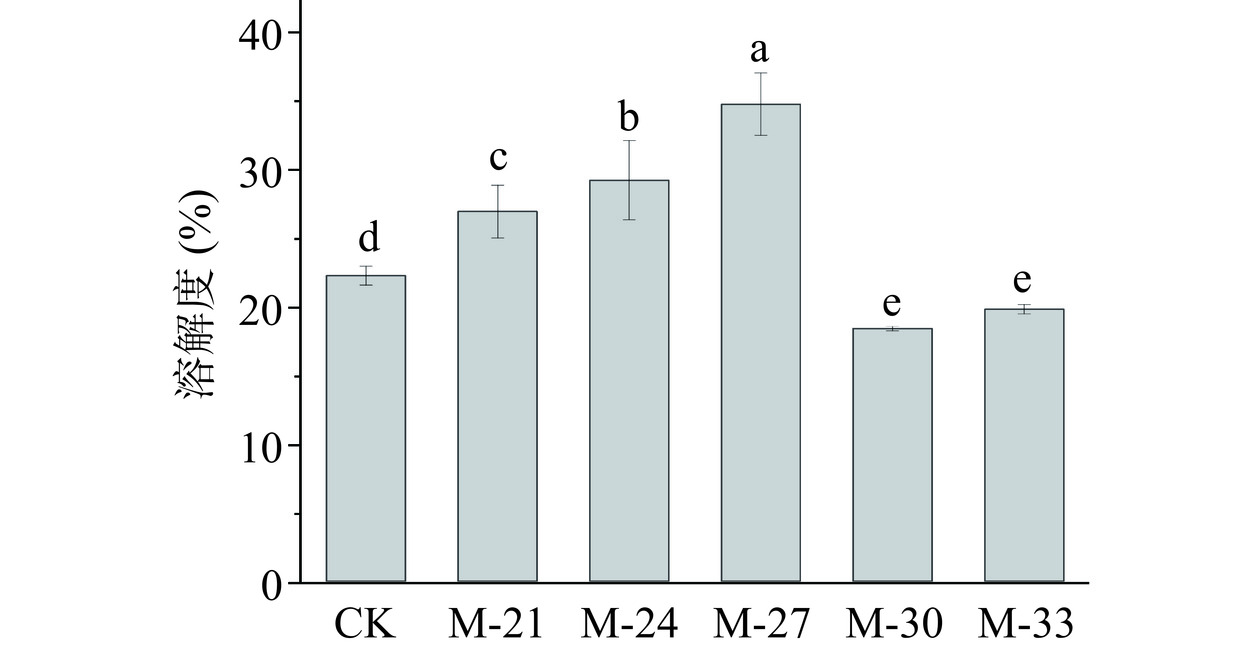
 下载:
下载:
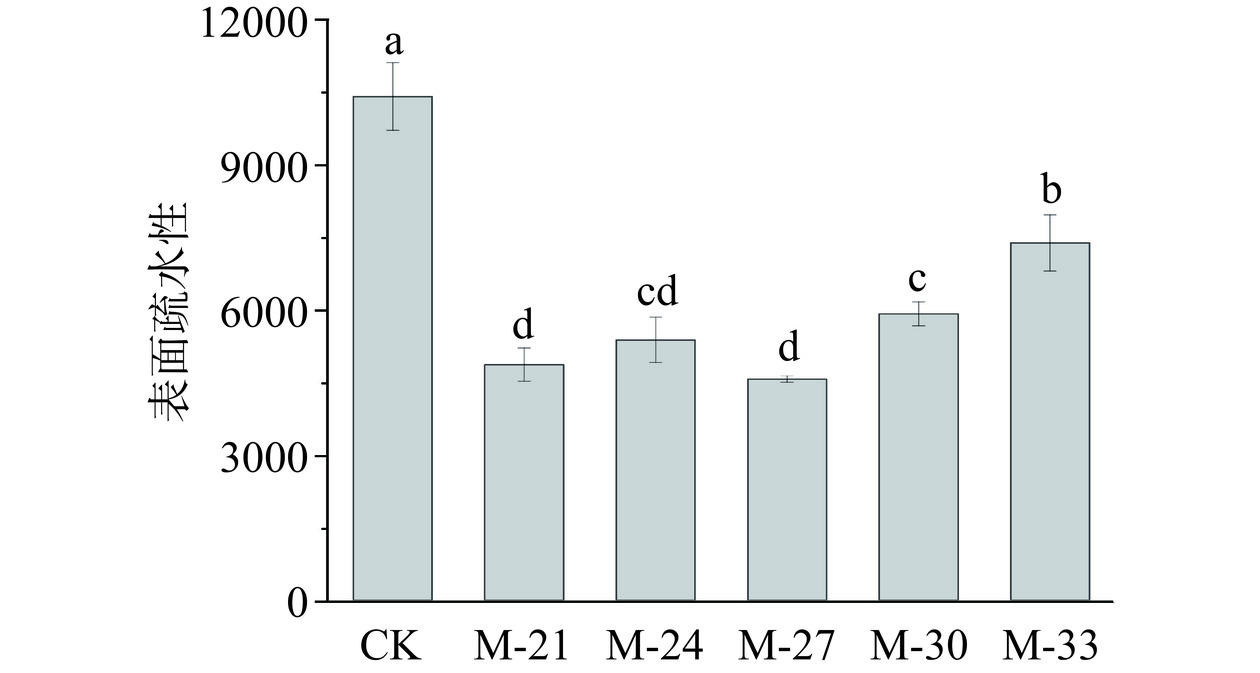
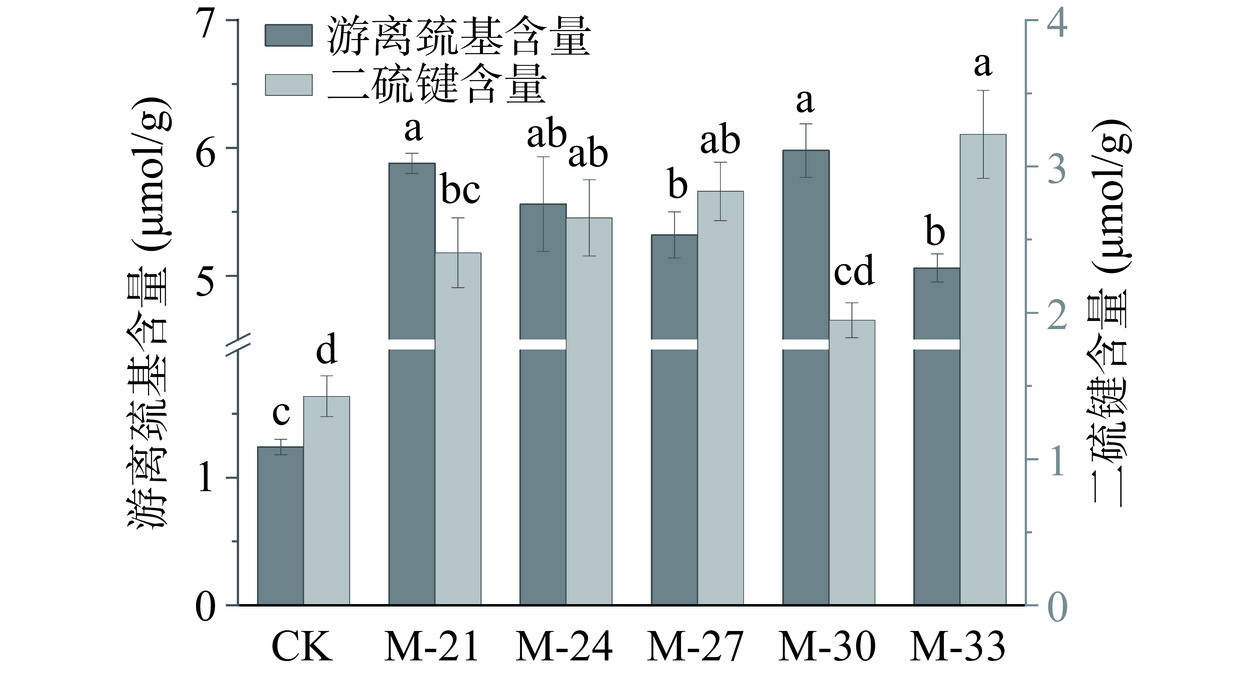

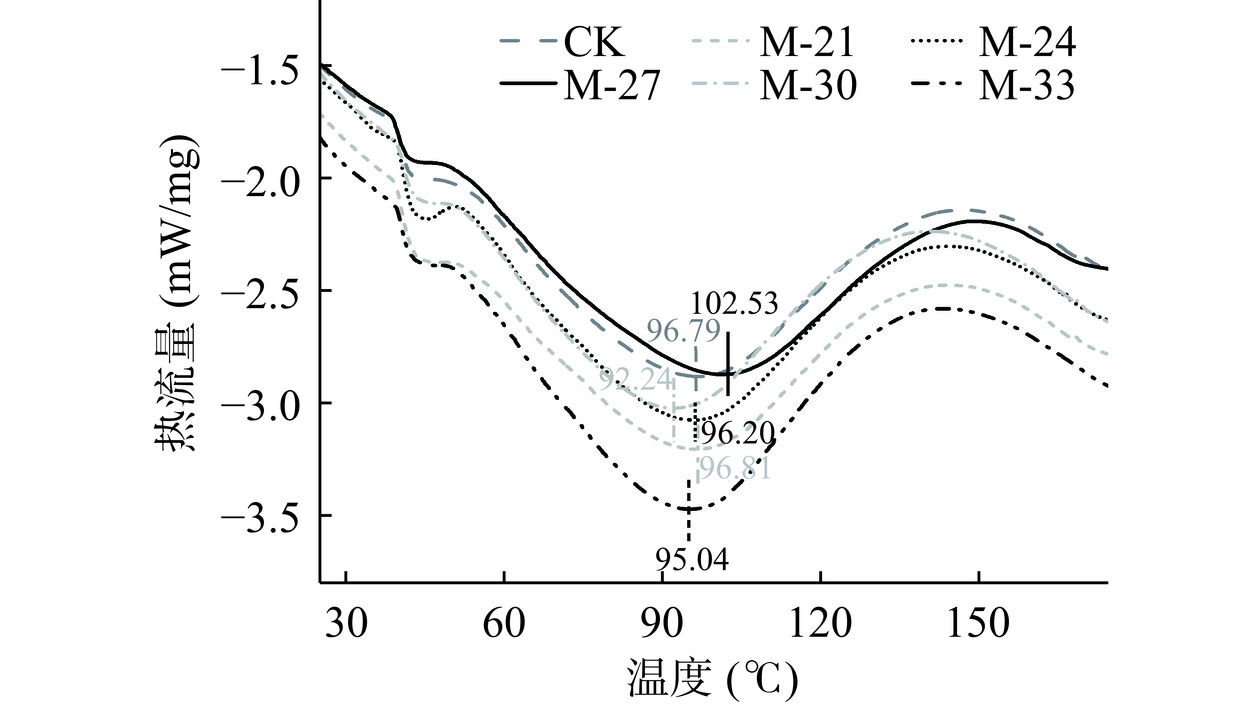
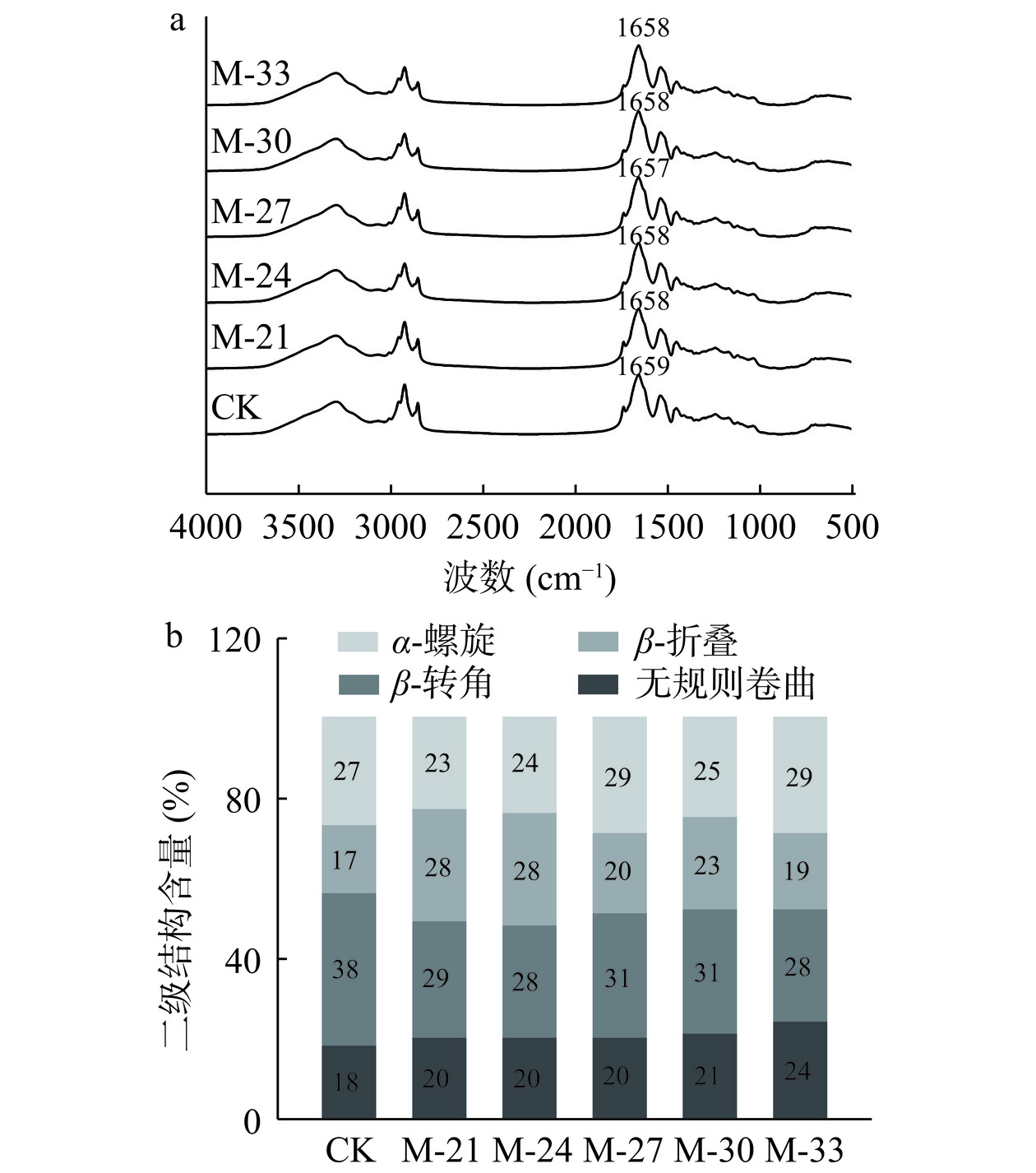
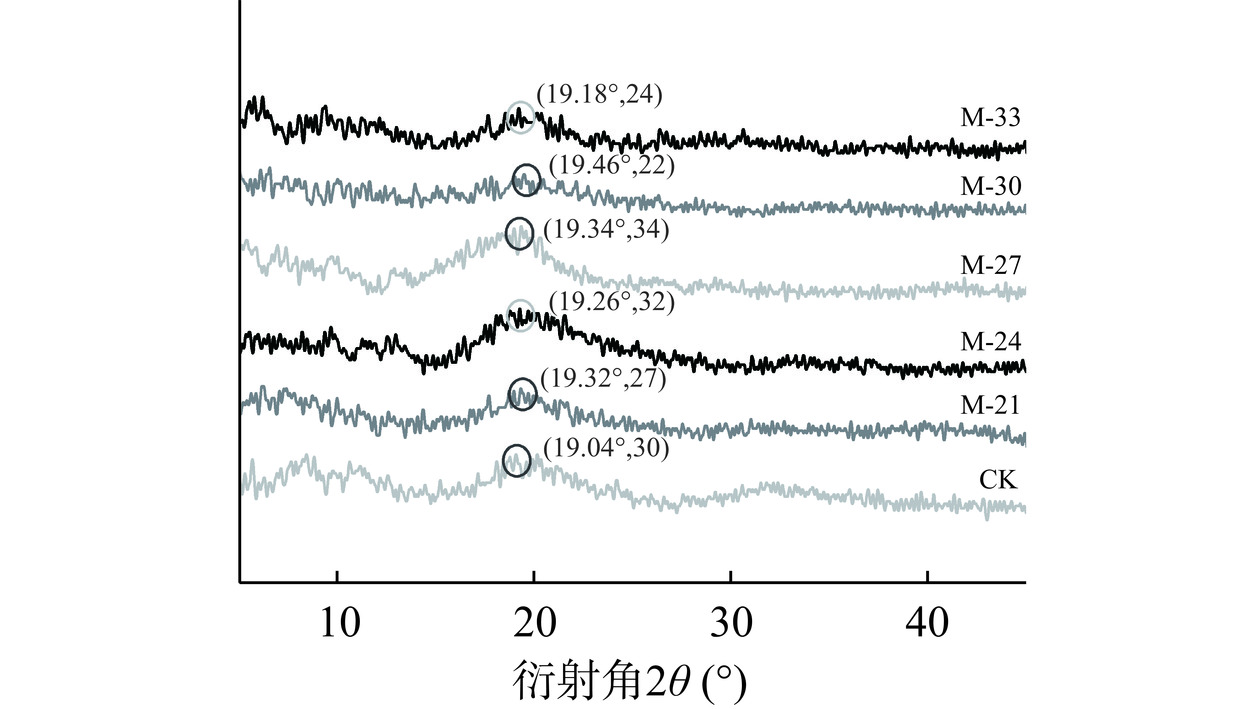
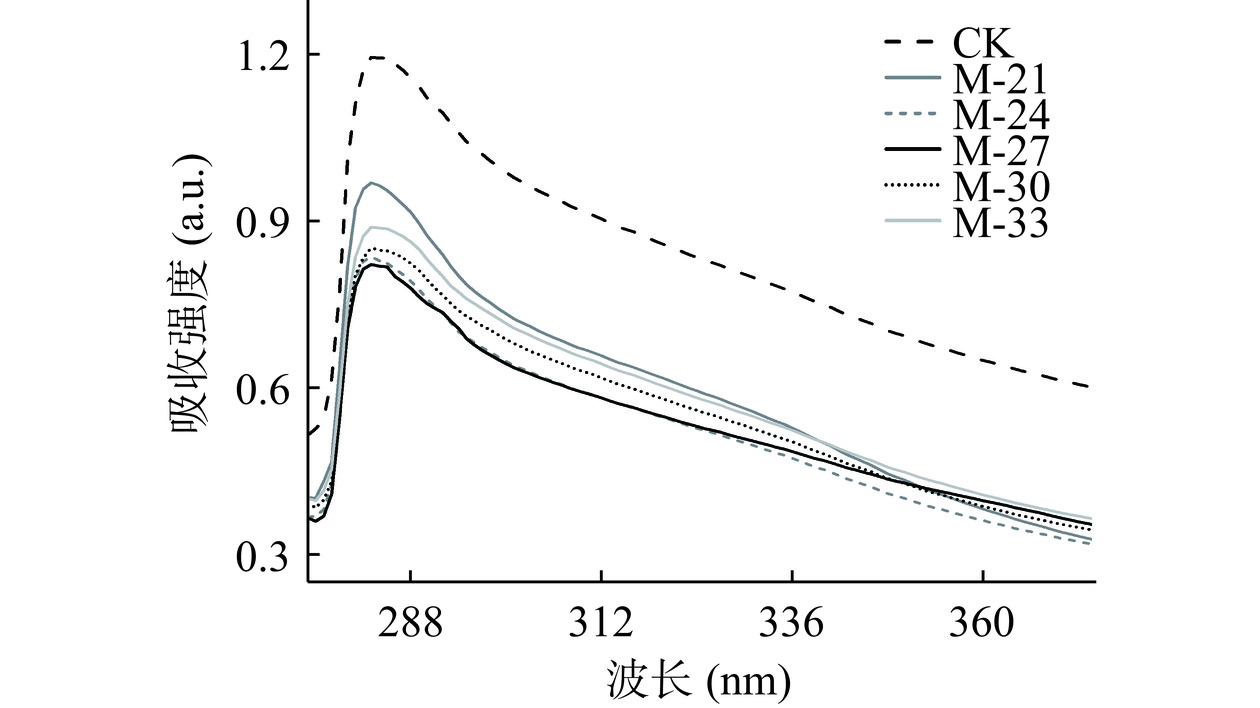
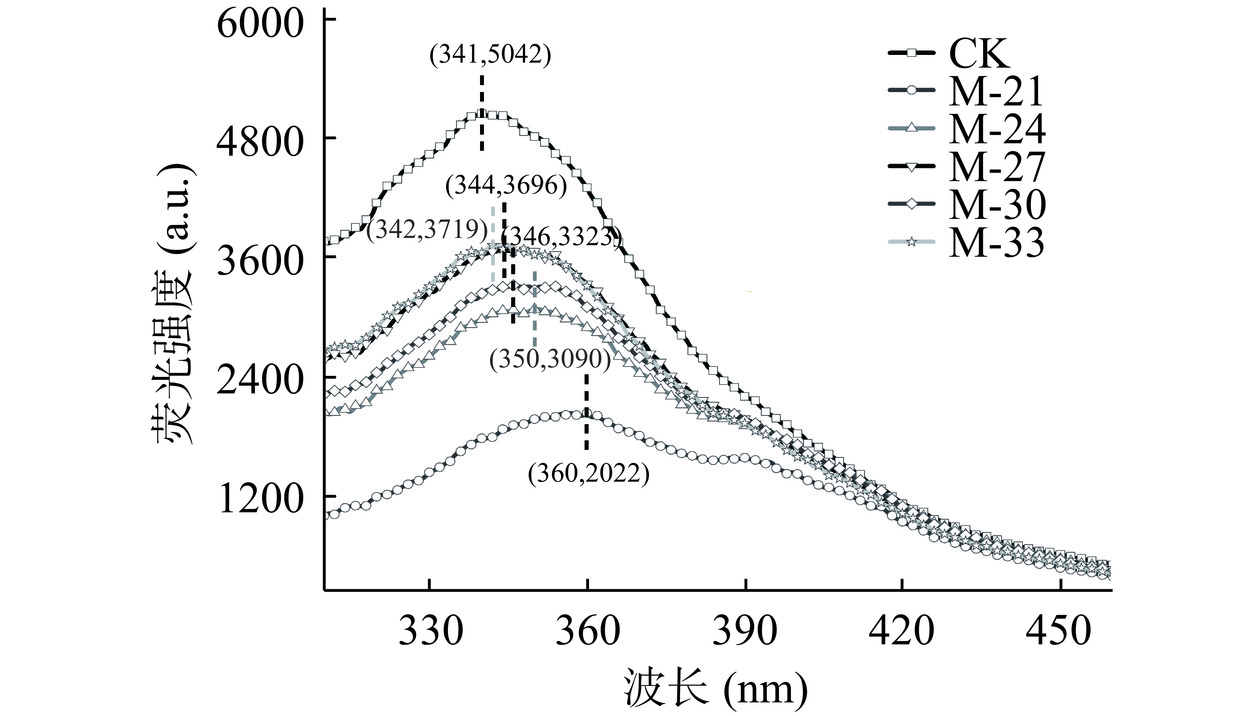
 下载:
下载:



